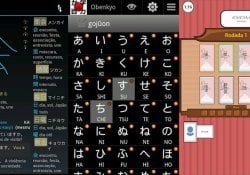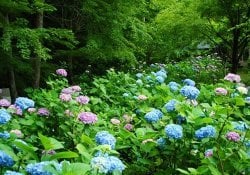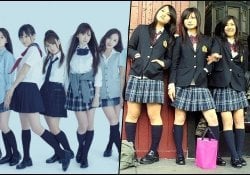Have you ever heard of the famous Japanese tea ceremony? In this article we will talk about the origin, curiosities, requirements, formalities, house and objects used in the tea ceremony called Chanoyu.
The Japanese tea ceremony is a traditional activity with influences from Taoism and Zen Buddhism, in which powdered green tea “matcha” [抹茶] is ceremonially prepared and served to guests in an atmosphere of simplicity and goodwill, surrounded by peace. , respect, harmony and purity.
The tea ceremony is known by the name "chanoyu" [茶の湯] which literally means "hot water [for] tea"; it is also known as "chadō" or "sadō" [茶道], which means "the way of tea".
We also recommend reading:
- Why Japanese Women Don't Shave Pubic Hair?
- Sanpaku Eyes – Superstition, Death and Meaning
- Kimono - All about traditional Japanese clothing
Índice de Conteúdo
The history of tea in Japan
It is unclear when tea was introduced from China to Japan, but it is generally said that Saisumi, who returned from Tang in 805, brought the tea seeds and planted them in Sakamoto at the foot of Mount Hiei.
Furthermore, it is stated in the dedication table that Kukai was also familiar with tea when he dedicated the book he requested during his stay to Emperor Saga. According to recent research, it is highly possible that it was already introduced in the Nara era.
There are seven poems that include the story of tea being served in a temple, it being pointed out that the tradition of tasting tea primarily in temples in Kyoto was inherited during the Heian period. It is believed that the tea introduced in ancient times was “Tencha”.
Origin of the tea ceremony in Japan
Matcha tasting was introduced at the end of the 12th century by the monk Eisai. At that time, tea was a precious beverage that was also used for medicinal purposes.
The custom of drinking matcha spread among the priests of Buddhist temples and the upper classes. In the 16th century, during the Momoyama period, tea drinking became popular among other groups in Japanese society.
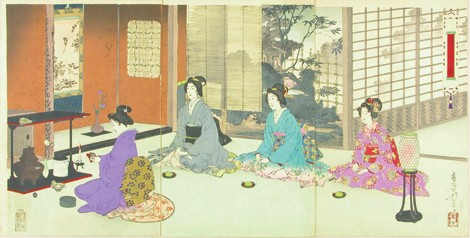
Sen no Rikyu – Considered the Japanese master of Japan's ceremony, he established a set of teachings that persist to this day.
Sen Rikyu defined 4 basic principles: harmony (Wa), respect (Kei), purity (Sei) and tranquility (Jyaku) and considered that each ceremony was unique and could not be reproduced.
Tea ceremony requirements and formalities
Performing the tea ceremony correctly is quite difficult. The tea ceremony practitioner needs to have knowledge of traditional arts, architecture, landscape gardening and floral arts.
Including tea cultivation and varieties, Japanese clothing (kimono), calligraphy, pottery, etiquette and incense. In addition to the formal procedures of his chanoyu style. Thus, studying the tea ceremony practically never ends.
Even to participate as a guest in a formal ceremony it is necessary to know the pre-defined gestures and phrases, the proper way to behave in the tea room, and how to help yourself to tea and sweets.
The formalities associated with this ceremony reveal the complexity of the postures to be adopted in Japanese society.
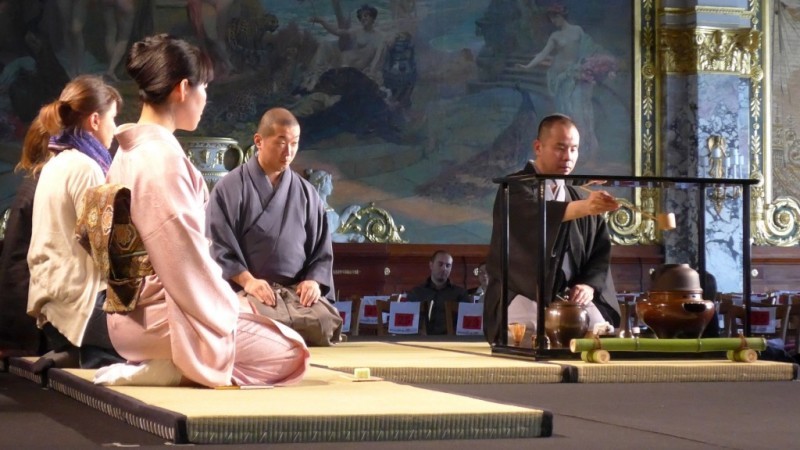
Tea ceremonies can take on a simpler character (chakai – “tea meeting”) with typical sweets, soft tea (usucha) and an aperitif (tenshin) or one can take on a more formal character (chaji – “tea affairs” ) which can last up to 4 hours and which also includes a traditional meal (Kaiseki) and strong tea (Koicha).
How the tea ceremony is performed varies depending on the school to which the host belongs, the occasion and the season. However, there are basic similarities:
The article is still halfway through, but we recommend also reading:
Teahouse - sukiya and chashitsu
The tea house is called the sukiya [数奇屋] and also the chashitsu [茶室] which literally means tea room. This house is usually located in a wooded area like a traditional Japanese garden.
The teahouse is usually made up of a preparation room called a "mizu-ya", a waiting room called a "yoritsuki", and a landscaped walkway called a "roji".
The typical features of "chashitsu" are "shoji" windows and sliding doors made of wooden structure covered with translucent Japanese paper, tatami mats, a "tokonoma", and have simple, soft and stylish colors. The ideal size of a chashitsu floor is 4.5 tatami mats.
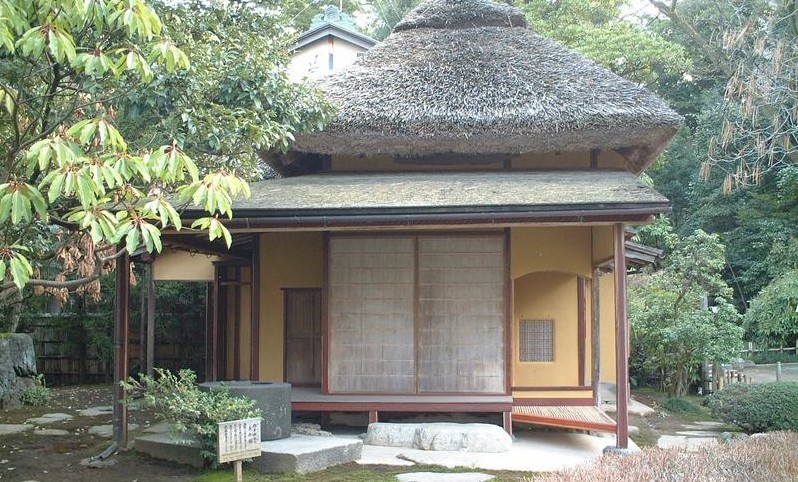
Utensils used in the tea ceremony
The utensils of the ceremony are called dōgu [道具] which literally means “tools”. The amount of dōgu needed in a ceremony varies depending on the school and style of demonstration.
Its variety, specific names and combinations of use make it impossible to create a list of all the utensils used in tea ceremonies. There are even specific dictionaries that run to hundreds of pages.
Below is a simplified list of some of the essentials used in a tea ceremony:
- Fukusa (silk scarf)
- Chawan (cup)
- Natsume or Cha-ire (powdered tea jar)
- Chasen (tea whisk)
- Chashaku (spatula for serving powdered tea)
- Chakin (cloth to clean the cup)
- Hishaku (bamboo shell)
- Kensui (container for dirty water)
- Tana (small shelf to place utensils)
- Kama (iron pot)
- Hole (brazier)
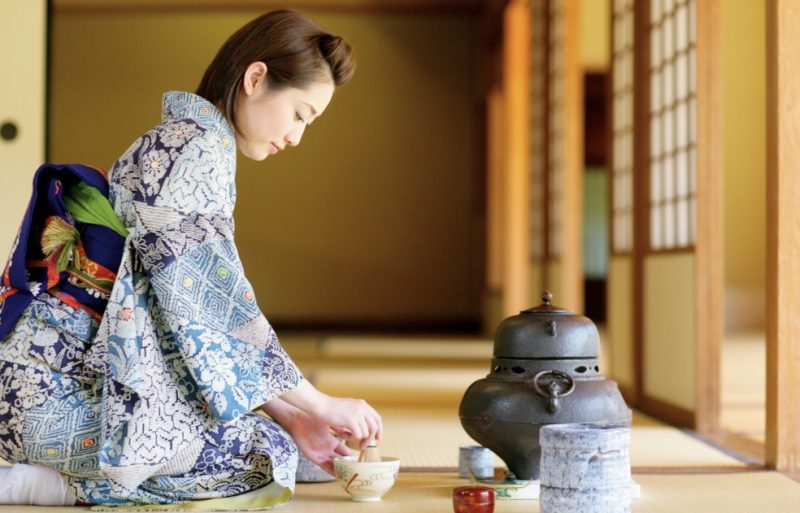
The Tea Ceremony - Chanoyu or Chado
The ceremony lasts about 4 hours, men and women wear clothes of discreet colors and every movement has a meaning. When serving the first cup of tea to the guest, the design of the cup must face you.
On more formal occasions, men wear silk kimono with three or five family crests and traditional white Japanese socks called tabi. Guests should have a folding fan and a pillow of small paper napkins called kaishi.
Despite the variations that exist in the performance of the tea ceremony, there is a common principle: simplicity and elegance of gestures.
When walking around the room, one must not step on or place objects on the black lines on the floor. The rule is that the guest of honor should stand facing the host and must kneel exactly on the sixteenth stripe.
You should only pick up the chawan (ceramic bowl) after bending down in gratitude to those who served it. Nothing is said during the entire ritual. It is a time of meditation and absolute silence.
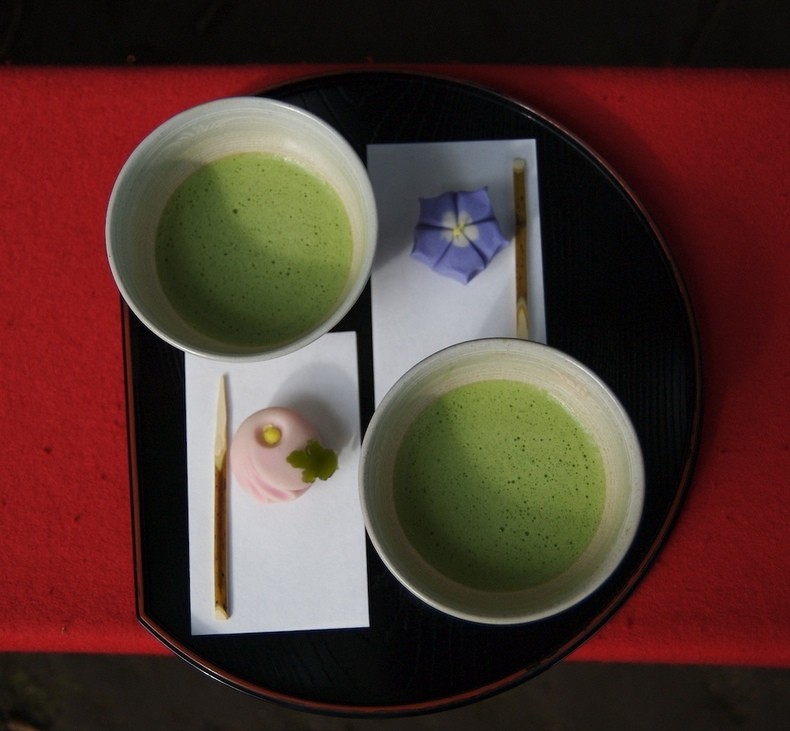
Tea Ceremony in Brazil
It is possible to attend a tea ceremony outside of Japan. In Brazil, some Japanese communities hold this event or even teach new people everything necessary to participate in a tea ceremony.
We recommend doing a search on the Chadourasenke and Bunkyo websites where you will find lots of information about tea ceremony events and accomplishments. Even courses and teachings can be purchased in this community.
There are also websites in Brazilian Portuguese entirely focused on the tea ceremony. If you live in São Paulo, you might want to visit the Centro de Chado Urasenke do Brasil in the Bunkyo na Liberdade building.
Types of Japanese Tea
See below the 3 main types of teas used in the tea ceremony in Japan:
Matcha [抹茶] - Powdered or ground green tea, used in tea ceremonies and also to flavor and color sweets and some Japanese foods.
- Usucha [薄茶] - Weak matcha;
- KoiCha [濃茶] – Koicha é uma mistura densa e forte de matcha;
We recommend reading our article: 15 Types of Japanese Tea
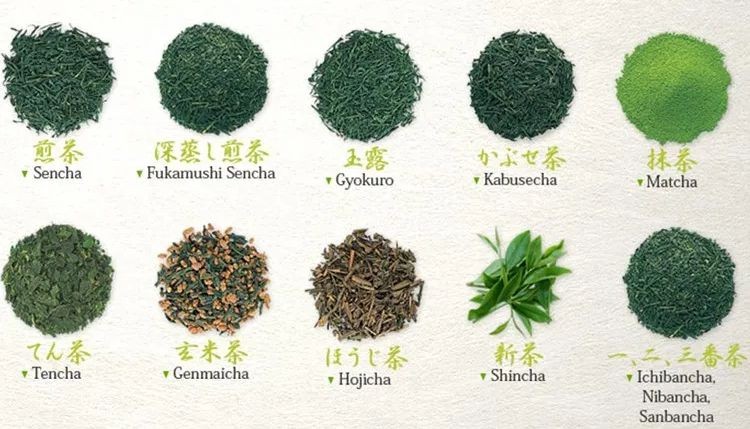
Utensils and Products for the Tea Ceremony
Below we will share a list of products from Amazon Brazil with some relation to tea:
Videos about the tea ceremony in Japan
To better understand the tea ceremony, let's leave some videos below to close the article. I hope you enjoyed the article. If you liked it, share and leave your comments. Hugs!


